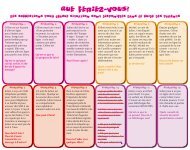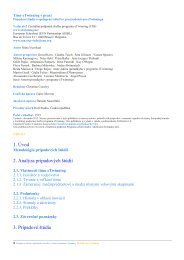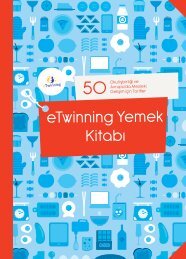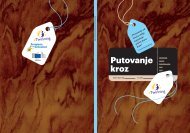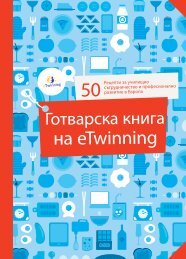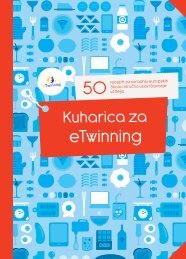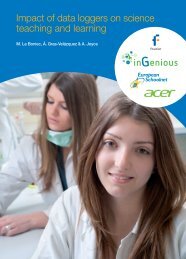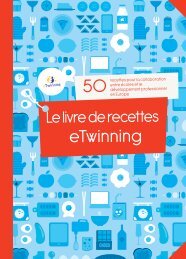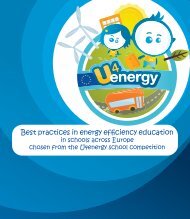itec - European Schoolnet
itec - European Schoolnet
itec - European Schoolnet
You also want an ePaper? Increase the reach of your titles
YUMPU automatically turns print PDFs into web optimized ePapers that Google loves.
iTEC Project<br />
Title: ITEC-D10_2_V1-1 041102012.Docx<br />
REPORT<br />
1. SCENARIO DEVELOPMENT ENVIRONMENT<br />
This chapter discusses the activities performed during the second year corresponding to tasks<br />
T10.3 and T10.4, whose main aim was to implement the first prototype of the Scenario<br />
Development Environment (SDE). The SDE is a software system based on semantic technologies<br />
that manages its own information models expressed as RDF triples (Beckett, 2004). The<br />
development, alignment and updating of this conceptual framework is performed within WP10’s<br />
tasks T10.1 and T10.2, whose most relevant results during the second year are discussed in<br />
Chapter 2.<br />
The SDE is a software package whose services are transparently integrated with those offered by<br />
the iTEC Composer to extend its functionality by providing recommendations to support the<br />
selection of resources. Therefore, the SDE does not provide an actual user interface, as other<br />
components in the iTEC Cloud will manage the interaction with final users. Each of the services<br />
implemented by the SDE is exposed to the world through the SDE API, whose main features (i.e.<br />
methods and data models) are briefly introduced in Section 1.1 and thoroughly described in<br />
Appendix III. The development of this API has been performed from the use cases in the SDE’s<br />
Reference Arch<strong>itec</strong>ture, discussed in D10.1 Section 4.3 (Anido, Santos, Caeiro, Míguez, Cañas, &<br />
Fernández, 2011). Functionalities provided by this API can be classified into three categories (cf.<br />
Figure 2):<br />
A) Technical Localization: methods in this category support the identification of Learning<br />
Stories and Learning Activities that may be implemented in a school according to the<br />
technological resources available there.<br />
B) Resource Planning: collects methods targeted to support the location and recommendation<br />
of resources useful to implement a Learning Story / Learning Activity.<br />
C) Validation: it provides methods to support the automated analysis of the degree to which<br />
the selected resources in a LARG meet the requirements specified by a Learning Story.<br />
The recommendation process is undoubtedly one of the more complex activities supported by SDE<br />
methods. It is organized into three distinct steps:<br />
1. Parsing and analysis of the requests received by the SDE API, and incorporation of<br />
relevance-related contextual information.<br />
2. Generation, according to the requests above, of one or more SPARQL semantic queries to<br />
the system’s Knowledge Base. This provides preliminary contextualized information<br />
filtering to retrieve only those resources that are potentially relevant to the active<br />
recommendation process.<br />
3. Estimation of the relevance of each resource according to the heuristics and algorithms.<br />
Section 1.2 analyses the existing alternatives for selecting recommendation algorithms, justifies<br />
the options taken, and discusses the recommendation factors considered by the present system.<br />
The greater the amount of information handled by the KB, the more accurate the recommendation<br />
results that can be obtained. The SDE relies on source data from existing iTEC registries, namely<br />
People & Events Directory, Learning Resource Exchange, Widget Store and Social Data<br />
Page 15/96



